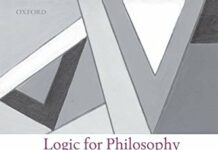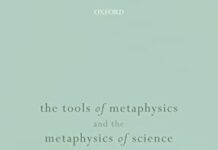
Ebook Info
- Published: 2011
- Number of pages: 333 pages
- Format: PDF
- File Size: 2.05 MB
- Authors: Theodore Sider
Description
In order to perfectly describe the world, it is not enough to speak truly. In this ambitious and ground-breaking book, Theodore Sider argues that for a representation to be fully successful, truth is not enough; the representation must also use the right concepts—concepts that ‘carve at the joints’—so that its conceptual structure matches reality’s structure. There is an objectively correct way to ‘write the book of the world’.According to Sider, metaphysics is primarily about fundamentality rather than necessity, conceptual analysis, or ontology. Fundamentality is understood in terms of structure: the fundamental truths are those truths that involve structural (joint-carving) concepts. Sider argues that part of the theory of structure is an account of how structure connects to other concepts. For example, structure can be used to illuminate laws of nature, explanation, reference, induction, physical geometry,substantivity, conventionality, objectivity, and metametaphysics. Another part is an account of how structure behaves. Since structure is a way of thinking about fundamentality, Sider’s account implies distinctive answers to questions about the nature of fundamentality. These answers distinguish histheory of structure from other recent theories of fundamentality, including Kit Fine’s theory of ground and reality, the theory of truthmaking, and Jonathan Schaffer’s theory of ontological dependence.
User’s Reviews
Reviews from Amazon users which were colected at the time this book was published on the website:
⭐This book has been floating around the world of metaphysics in .pdf form for a couple years, so it’s great to finally have it, in its final form, in print.Some philosophy books present a thesis, then an argument for that thesis, and then argue for the premises of the argument. Sider’s earlier book,
⭐, is a book like this. Some books present a system, and show how the system applies to certain extant debates in philosophy. Lewis’
⭐is such a book. This book is like Lewis’. In _Writing the Book of the World_, Sider lays the foundation of his system, and then he applies the system to pretty much every important debate in metaphysics and metametaphysics. The book invites us into Sider’s mind, showing us the way he thinks about the world.Sider begins WtBotW by claiming that metaphysics is about structure. Not what there is or what there has to be or what there could have been, but about structure. Sider says that if we take structure as a primitive, we can understand modality, intrinsicality, naturalness, laws of nature, similarity, fundamentality, and realism in terms of structure. We will have a simpler, yet powerful, ideology. He then explains a bit about structure, and spends the rest of the book explaining how metametaphysics and metaphysics is (or should be) all about structure.This book is for anyone who is interested in how one of the best living metaphysicians thinks about the current trends in metaphysics and meta-metaphysics. It is at times very technical, and those who aren’t familiar with the current metaphysics literature will feel like they’ve been thrown into the deep end. But there is a great reward for those who put in the time.
⭐great
⭐Theodore Sider is to be congratulated on attacking the issue of the world’s structure. By “world” I assume he means the known universe. For it is the nature of the universe that metaphysics seeks to reveal, or at least question.The book is recommended for students of metaphysics, although the informed lay-person can understand it.Sider’s perspective considers the predicament of (1) what is the structure of the world, (2) how do we see the world in structural terms, and (3) at the foundation, how do we see seeing the world’s structure? To the point, which of these, or all, or parts of all, are most useful in dilating on the issue of “Writing the Book of the World?” Unless I am mistaken, and I may be, Sider allocates (1) to physics, and (2) to metaphysics; where, (3) deals with the problem of metaphysics itself.In assaying the structure of the world, the problem (if it is indeed a problem) of objectivity is decisive. In fact, it is we who are doing the asking, and one of us (Sider) who is writing about it. Not to disturb the waters too much, but physics is also a human activity. Einstein’s theory of relativity did not come down on the backs of angels.I was disappointed in Sider’s strategy. He does not stand on the shoulders of Aristotle in placing structure in the mix with being, purpose, behavior, material, and process (How does structure come to be and how is it maintained?) Further, he does not delve deeply into the other properties that attend structure: size, space and place, shape, color, and so on – these as long as he sticks with the human-centric view. Form is more than interfaces, although these are critical. As one approaches the question of the world’s form, it seems to me to be important how that form affects being and becoming, behavior, material, and so on, and vice versa. For example, how does the world’s form (say its size and interfaces) bear on the world’s behavior? How does it relate to the process of the evolving world, including its boundary conditions, such as its initial state?Until these relationships are fully explored (Sider, to his credit, relates structure to other mathematical-philosophical dimensions, such as natural law, geometry, and induction), the issue of the world’s structure is left wanting.One of the major pitfalls is that Sider does not precisely define “structure.” Thus, he considers geometry as a relation rather than as a property. Be that as it may, he has some interesting ideas that deserve a reading.
⭐This is a remarkable book. Without any doubt it pushes the barriers of contemporary metaphysics beyond the excitement generated by many of the single articles footnoting the metaphysical legacy of Quine, Lewis, Kripke,Williamson amongst others, and establishes a vision in which many of the most insightful metaphyical articles of recent years can be seen as belonging to the same agenda. At the same time [ and how ironic is this], the author pushes new perspectives on time, parts and wholes, ontology, logic, and modality using the overarching link of ‘Structure’.There are occasions when certain philosophy books help determine a new agenda for the subject. I am reminded of the impact of Wittenstein’s ‘Philosophical Investigations’, Strawson’s ‘Individuals’, Quine’s ‘Word and Object’, Dummett’s ‘Frege’, Kripke’s ‘Naming and Necessity’, and Tim Williamson’s ‘Knowledge and its Limits’ – all immensely provocative and agenda setting works. Sider’s ‘Writing the Book of the World’ falls into this category. Make no mistake, it is a tough read, but is exceptionally well written. On completion, I felt I had gained a great deal, and perhaps just as importantly, knew much more clearly and in much more detail what i did not understand.
⭐This book seems to make an argument supporting metaphysical realism. I found the argumentation very obscure and could not really follow it. I have taken a number of advanced philosophy courses but simply could not grasp what the professor was talking about. He refers to “carving the world at its joints” but again I have no idea what he is referring to though I struggled to follow him. I am not sure who his intended audience other than a select few in the academic community.
Keywords
Free Download Writing the Book of the World in PDF format
Writing the Book of the World PDF Free Download
Download Writing the Book of the World 2011 PDF Free
Writing the Book of the World 2011 PDF Free Download
Download Writing the Book of the World PDF
Free Download Ebook Writing the Book of the World



